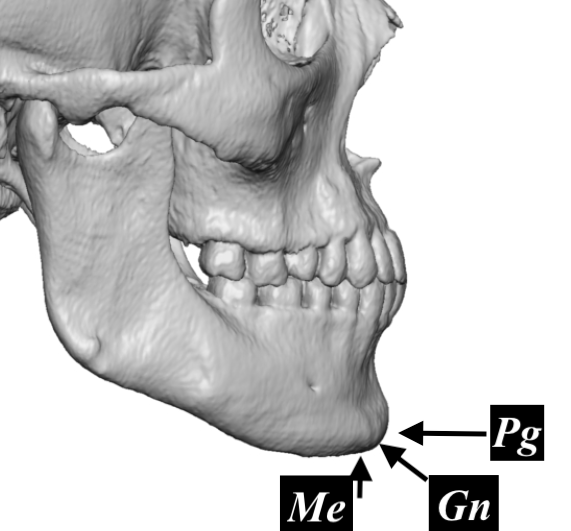Background: Chin augmentation using an implant is commonly viewed as a ‘simple and easy’ procedure. It is certainly the least complicated of all facial implant procedures as it involves only a single implant placement on the front edge of the chin bone. And while there are few anatomic obstacles on the way to the chin, whether from the skin below or through an intraoral approach, getting the desired aesthetic outcome is not always easy or assured. The ease of surgical technique should be confused with getting a good aesthetic result as readily.
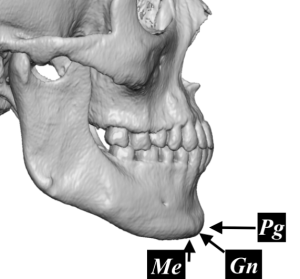
The menton is the lowest bony point on the chin which is tucked under the pogonion for many patients. It often becomes the inadvertent chin implant location either due to the convenience of access or the shifting of the implant downward towards the path of dissection from the submental incision. This will always have a vertical lengthening effect to the chin as the menton provides a more downward direction of augmentation due to the shape of the bone. In some cases the surgeon may deliberately place the implant on the menton to create more of a V shape to the chin. But this is rarely aesthetically successful as the shape of any standard chin implanr isn’t specifically made to do so. (the implant is round not V-shaped)
Case Study: This female had a history of a standard chin implant (of unknown style and size) placed through a submental incision. What she didn’t like about the result is that it lengthened her face and did not provide much if any horizontal projection…which is what she wanted. The chin implant appeared to be hanging off of the chin. She has been subsequently getting injectable fillers to achieve improved horizontal projection.
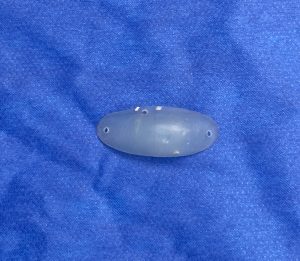
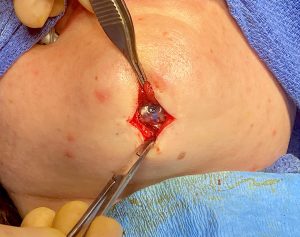
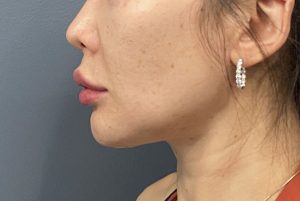
There are indications for the placement of standard chin implants at all three cephalometric chin projection points. For the most horizontal projection the pogonion location is best. For mainly vertical lengthening the menton location its used. (for which no standard implant is designed to actually be placed) For horizontal and with some assured vertical projection is what the gnathion location provides. Understanding these chin implant location is just as important in the use of standard implants as their style and size. In custom chin implant designs these locations become less relevant as the bony coverage is usually bigger and the known aesthetic effects of them are more predictable and controlled by the design before surgery.
Case Highlights:
1) The success or failure of chin implants is dependent on their shape and size as well as where they are placed on the chin bone.
2) A standard chin implant that sits higher on the chin bone can provide complete horizontal augmentation and avoid any risk of vertical elongation. (the pogonion and not the menton location)
3) The presence of injectible fillers does not usually necessitate removal before chin implant surgery.
Dr. Barry Eppley
World-Renowned Plastic Surgeon

